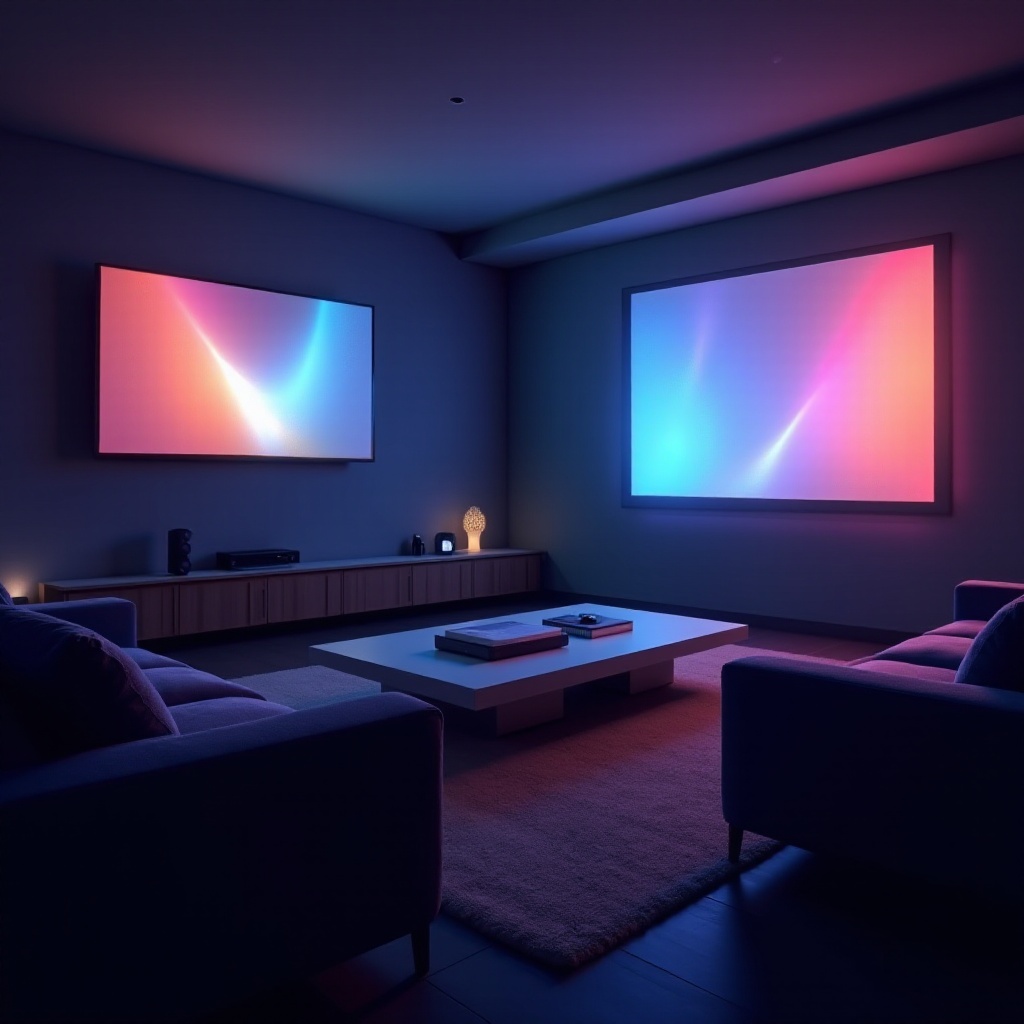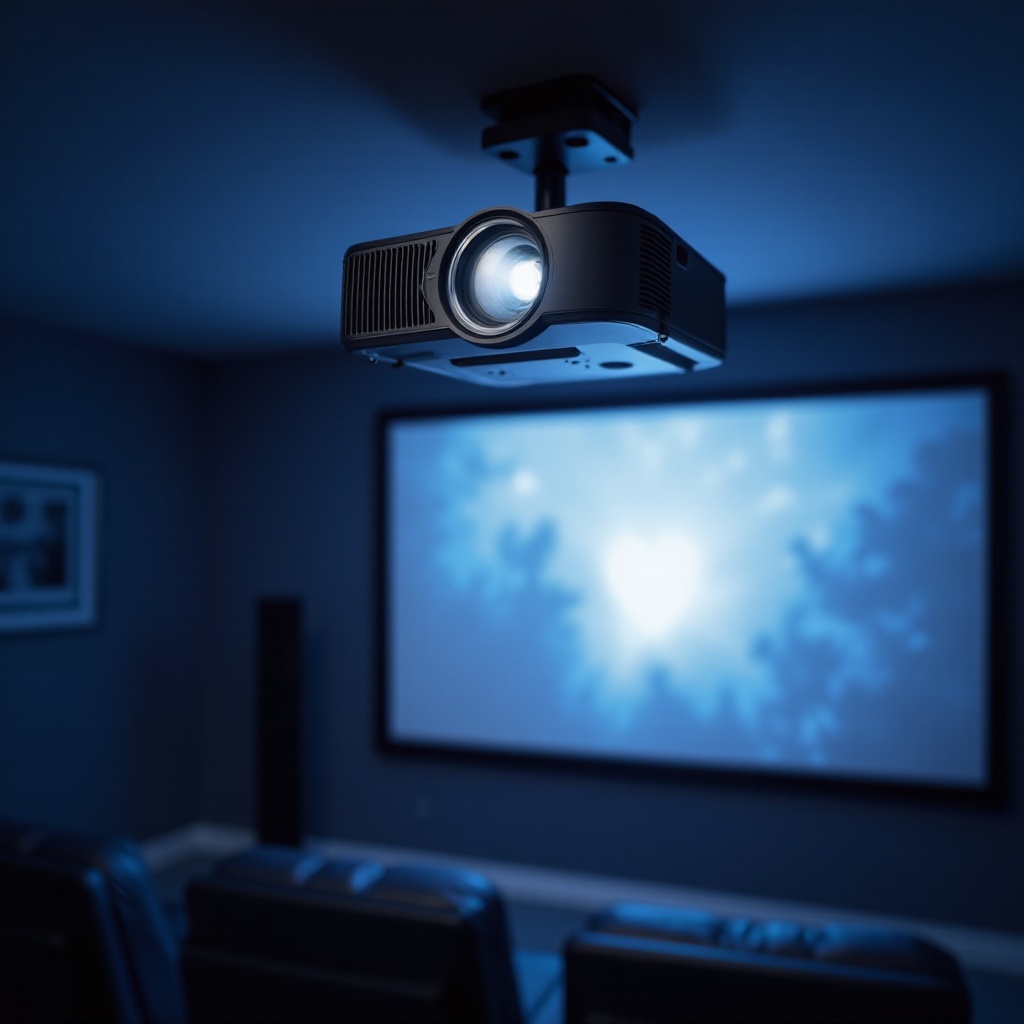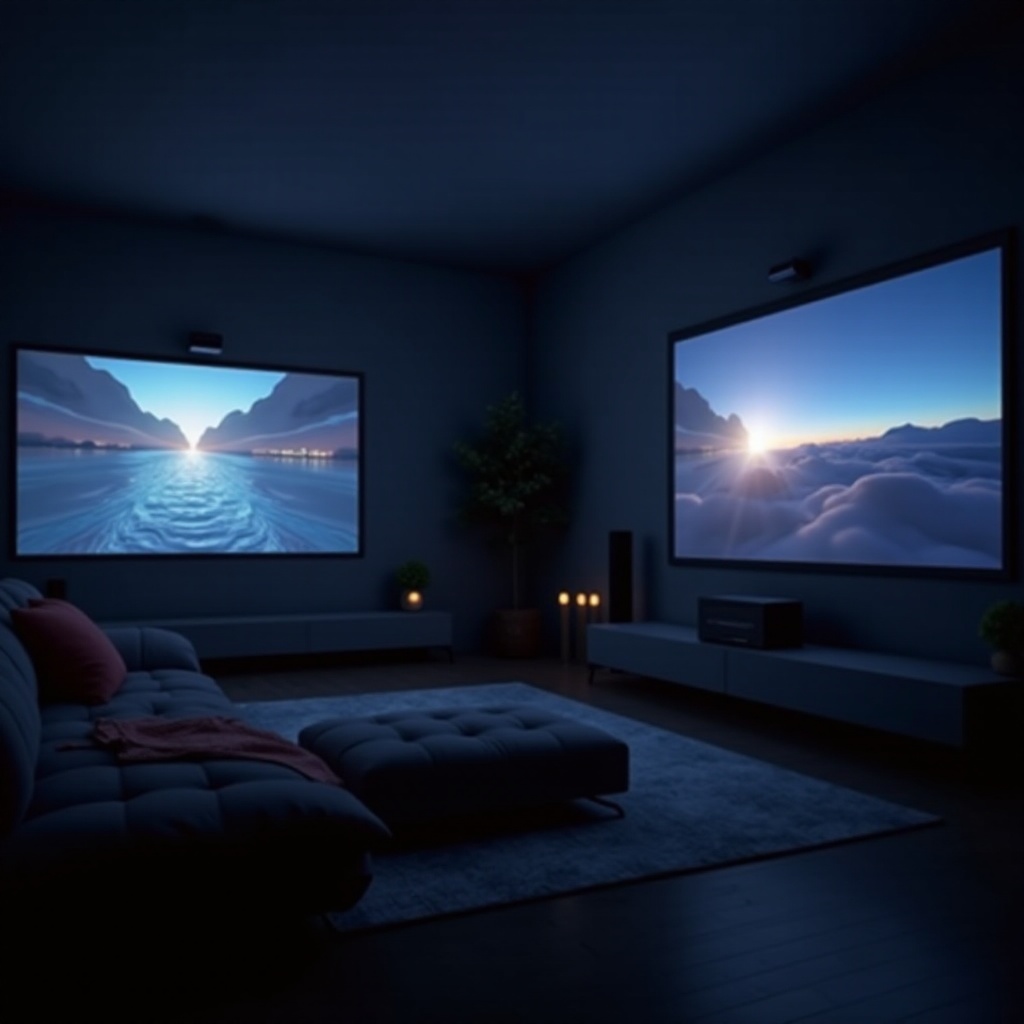Introduction
Choosing the perfect device for your home theater can transform your movie nights into extraordinary experiences. Deciding between a TV and a projector often complicates things due to their distinct features and advantages. This guide aims to provide a comprehensive comparison to help you make an informed decision, ensuring your home theater setup meets your expectations and needs.

Understanding the Basics
To commence your journey towards the ideal home theater, it’s crucial to understand the fundamental differences between a projector and a TV.
What is a Projector?
A projector casts images or videos onto a screen or wall, creating a large viewing area. It uses light to display content, and the image size can be adjusted based on the projection distance.
What is a TV?
A TV, or television, is an electronic device with a screen that displays images and videos. It comes in various sizes and technologies, offering a high-quality and user-friendly viewing experience.
Advantages of Projectors for Home Theaters
Projectors can significantly enhance your home theater experience. Here are a few notable benefits that make them appealing.
Immersive Viewing Experience
Projectors create an immersive atmosphere as their large displays can fill your entire vision field. This makes it easier to get lost in the storyline and the vividness of the scenes, enhancing your viewing pleasure.
Larger Screen Sizes
Unlike TVs which have size limitations, projectors can display much larger images, even up to 300 inches. This flexibility allows you to adjust the screen size to suit the room and audience, offering a scalable solution.
Cinema-like Feel
Projectors mimic the experience of watching a movie in the theater. The larger screen size, combined with a dimly lit room, creates a genuine cinema-like ambiance in your own home, perfect for movie buffs.
Projector Technologies
Projectors come with various technologies and features that influence your viewing quality. Understanding these aspects is essential.
Types of Projectors (DLP, LCD, LCoS)
Different projector types include:
1. DLP (Digital Light Processing) – Provides high-quality images and excellent contrast.
2. LCD (Liquid Crystal Display) – Offers vibrant colors and higher brightness.
3. LCoS (Liquid Crystal on Silicon) – Combines the best attributes of DLP and LCD for superior image quality.
Resolution and Brightness
Projectors come in various resolutions, such as 1080p or 4K, affecting the clarity and detail of the projected image. Brightness levels, measured in lumens, determine how well a projector performs in different lighting conditions.
Connectivity Options
Modern projectors support multiple connectivity options, including HDMI, USB, and wireless connections. This allows you to easily connect multiple devices like Blu-ray players, gaming consoles, or streaming devices.

Pros and Cons of Using Projectors
Before making a decision, considering the pros and cons of projectors will provide a clearer picture of what to expect.
Pros
- Flexibility in Screen Size: Adjustable to fit different room sizes.
- Portability: Easy to move and set up in different rooms.
- Cost-Effective for Large Screens: More affordable for larger viewing areas than TVs.
Cons
- Ambient Light Sensitivity: Requires a dim or dark room for optimal viewing.
- Setup and Maintenance: More complex setup and regular maintenance, such as changing bulbs.
- Sound System: Usually requires an external sound system for high-quality audio.
Comparison: Projectors vs TVs
When pitting projectors against TVs, consider several factors to determine which suits your home theater needs better. This comparison aims to help you assess key aspects before making a choice.
Viewing Experience and Comfort
While projectors provide an immersive, grandiose experience reminiscent of a theater, TVs offer crystal-clear image quality and vibrant colors without the need to adjust room lighting, providing comfort and convenience.
Cost and Size Efficiency
When it comes to cost, investing in a projector can be more economical if you want a larger screen size. However, for smaller viewing sizes, TVs might offer better value for money. TVs are also generally easier to set up and require less maintenance.
Setup and Space Requirements
Projectors need more space to project large images and are more complicated to install, requiring proper alignment and a screen or suitable wall. In contrast, TVs are straightforward to mount or place and are independent of room lighting.

Choosing the Right Projector
If you decide a projector is the way to go, consider the following factors to choose the right one for your home theater.
Room Size and Ambient Light
Larger rooms require higher lumens for clear images. Also, consider the ability to control lighting. A darker room enhances the viewing experience with a projector.
Screen Types and Accessories
Invest in a good-quality screen designed for projectors. Fixed screens ensure consistent quality, while retractable screens save space. Accessories like ceiling mounts and sound systems also enhance your setup.
Brand and Budget
Consider reputable brands known for quality projectors, such as Epson or Sony. Balance your needs with your budget to find a projector that offers the best features without breaking the bank.
Conclusion
Both projectors and TVs have unique advantages and limitations. Your choice will ultimately depend on your specific needs, room setup, and budget. Assess the viewing experience, cost, setup requirements, and space available to make an informed decision that will transform your home theater into a wonderful entertainment space.
Frequently Asked Questions
Can I use a projector in a small room?
Yes, short-throw projectors are designed for small spaces. They project large images from a minimal distance, making them ideal for compact rooms.
Are projectors hard to maintain?
Not necessarily. Modern projectors are designed for easy maintenance, though you may need to occasionally change bulbs and clean filters to keep the picture quality optimum.
Do projectors work well in daylight?
Projectors perform best in darker environments. However, high-lumen projectors can still provide a decent viewing experience in rooms with some ambient light. Using blackout curtains can also help improve visibility during the day.